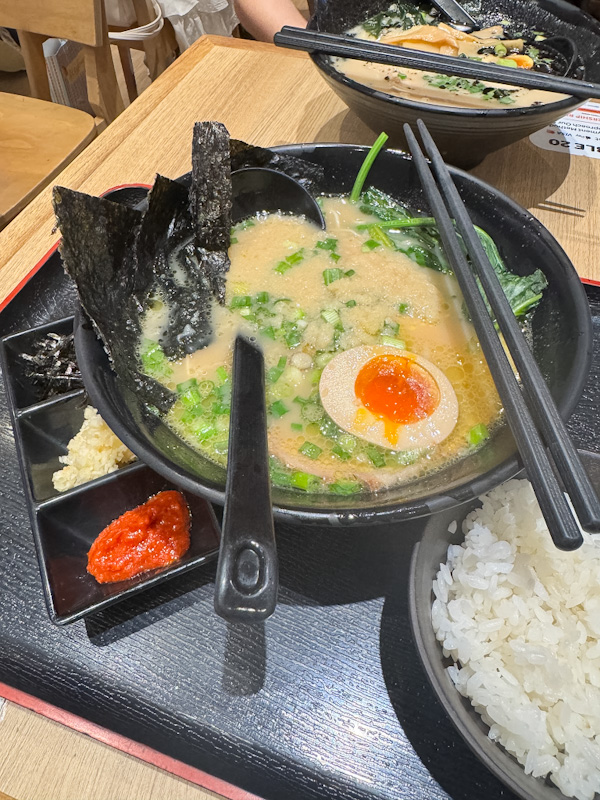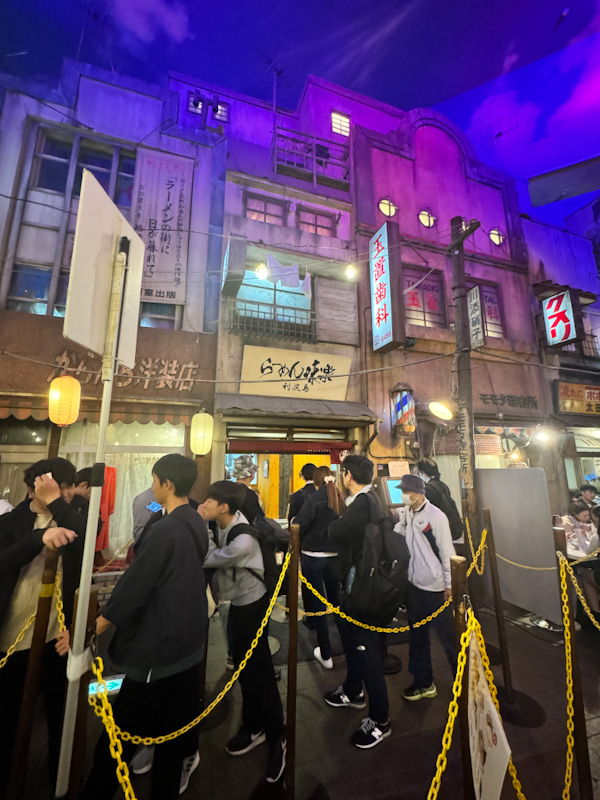
If you’re a ramen lover like me, visiting the Shin-Yokohama Ramen Museum is like stepping into noodle heaven. But beyond the nostalgic streets and delicious bowls, the museum is packed with fascinating info about the history, science, and craftsmanship behind Japan’s most beloved comfort food. In this post, I’m breaking down everything I’ve learned—from the origins of ramen to the key components that make up a perfect bowl—so you can deepen your ramen knowledge and slurp smarter.
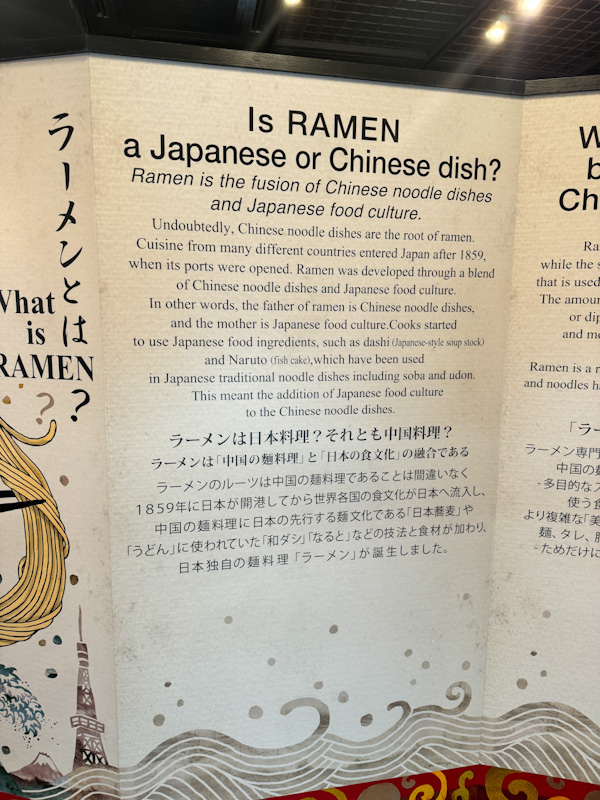
1. What Is Ramen and Where Did It Come From?
Ramen might be one of Japan’s most iconic dishes, but it actually has roots in Chinese noodle soup. The earliest versions of ramen started appearing in Japan in the late 1800s when Chinese immigrants introduced wheat noodles served in a meat-based broth. Back then, it was called “Shina soba” (literally “Chinese soba”), and it slowly evolved into the distinct Japanese dish we know today.
After World War II, ramen exploded in popularity—partly because cheap wheat from the U.S. made noodles more accessible, and people were craving hearty meals that felt like home. By the 1950s and 60s, regional ramen styles started popping up all over Japan, and it quickly became a national obsession. Today, ramen isn’t just food—it’s a full-on culture, complete with specialty shops, ramen-themed video games, and even museums like the one I visited.

2. What’s the Difference Between Japanese Ramen and Chinese Noodles?
At first glance, Japanese ramen and Chinese noodles might look pretty similar—both are long strands of wheat-based noodles served in broth. But once you dive in, there are some key differences that set them apart.
Chinese noodles are incredibly diverse and have been around for thousands of years. They can be wheat or rice-based, thick or thin, hand-pulled or knife-cut, and they’re used across a huge range of dishes from wonton soup to zhajiangmian. The broth in Chinese noodle soups tends to be lighter, clearer, and often flavored with aromatics like ginger, scallions, and soy.
Japanese ramen, on the other hand, is a relatively newer invention with a much more defined structure. The noodles are made using a special alkaline agent called kansui, which gives ramen its signature chewiness and slightly yellow hue. The broth is usually richer, more complex, and slow-cooked from pork, chicken, or seafood bones for hours—sometimes even days. Ramen also typically comes with very specific toppings like soft-boiled eggs, chashu pork, nori, and menma (fermented bamboo shoots). There’s also often an emphasis on Umami being the secret to a good bowl of ramen which is a Japanese discovery.
So while ramen definitely has Chinese roots, it’s become its own unique and deeply Japanese dish over the years—with rules, variations, and cult followings to match.

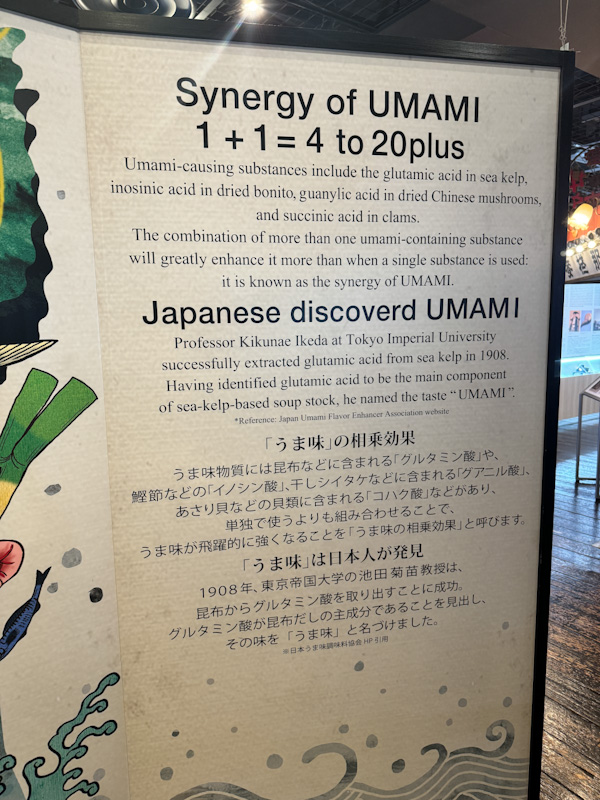
3. What Is Umami and Its Role in Ramen?
Let’s talk about the secret sauce behind every addictive bowl of ramen: umami.
You’ve probably heard the word tossed around a lot—especially when people describe ramen, sushi, or even MSG—but what exactly is umami? It’s often called the “fifth taste,” joining sweet, sour, salty, and bitter. Discovered by a Japanese chemist in the early 1900s, umami is that deep, savory, mouth-watering flavor that makes you go, “Mmm.” Think of the richness in soy sauce, the depth of a good miso, or the intense savoriness of a slow-cooked pork bone broth—that’s umami at work.
In ramen, umami is absolutely everything. It’s layered into every component: from the dashi (which might use ingredients like kombu and dried bonito flakes), to the tare seasoning (soy, miso, or salt-based), and of course the broth itself. Even the toppings—like chashu pork or marinated eggs—are there to amp up the umami. A good bowl of ramen isn’t just salty or meaty; it’s balanced, complex, and leaves a lasting savory punch that makes you crave the next slurp.
If you’ve ever wondered why you just can’t stop thinking about that one ramen you had in Tokyo—or even your neighborhood favorite in Singapore—it’s probably the umami in ramen doing its magic.
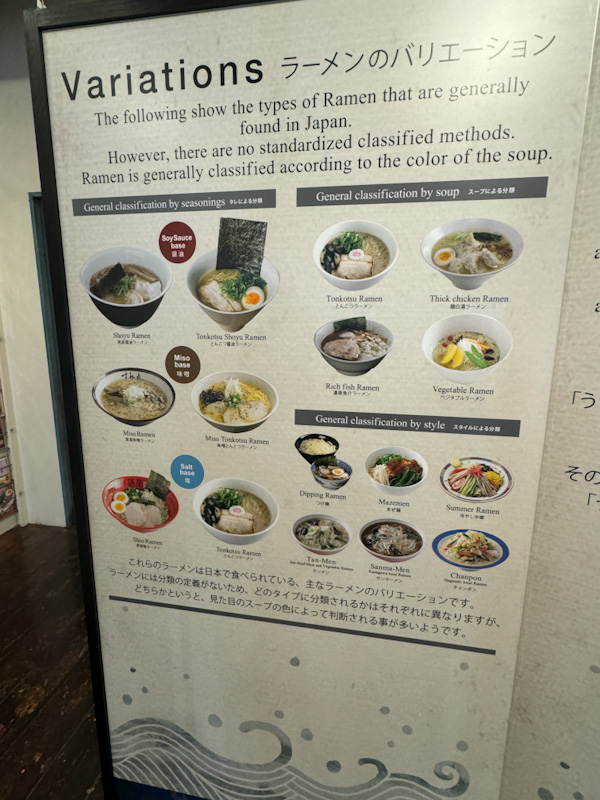
4. What Are the Different Types of Ramen?
Not all ramen is created equal—and that’s part of what makes it so fun (and addictive) to explore. Across Japan, every region has its own take, leading to a huge variety of ramen styles. Whether you’re new to ramen or a seasoned slurper, here are some of the most common types of ramen in Japan you’ll come across:
- Shoyu Ramen (Soy Sauce): This is the OG. The broth is typically clear and brown, seasoned with soy sauce for a savoury, slightly tangy kick. Originating from Tokyo, it’s light yet flavorful—easy to love and often a safe bet for first-timers.
- Shio Ramen (Salt): The lightest of the bunch, shio ramen has a clear, golden broth that really lets the base stock shine. Think gentle, clean flavours—perfect if you want something less heavy but still satisfying.
- Miso Ramen: Born in Hokkaido, this style features a rich, hearty broth made with fermented soybean paste (miso). It’s got bold, nutty, and slightly sweet flavors. Often paired with butter, corn, and thicker noodles, it’s a full-on comfort bowl—especially in winter.
- Tonkotsu Ramen (Pork Bone): This one’s for the rich broth lovers. Hailing from Fukuoka, tonkotsu ramen is known for its creamy, milky-white broth, simmered for hours with pork bones until it’s thick and full of umami. It’s rich, intense, and super satisfying.
- Tsukemen (Dipping Ramen): A fun twist where the noodles and broth come separately. You dip the cold noodles into a thicker, concentrated broth. It’s a different texture and experience altogether—especially popular in the summer months.
These are just the big five, but there are tons of local variations, fusions, and seasonal specials. From chicken paitan to seafood-based ramen, Japan’s ramen scene is endlessly creative. Exploring the different ramen types is like taking a tasty tour through Japan—one bowl at a time.
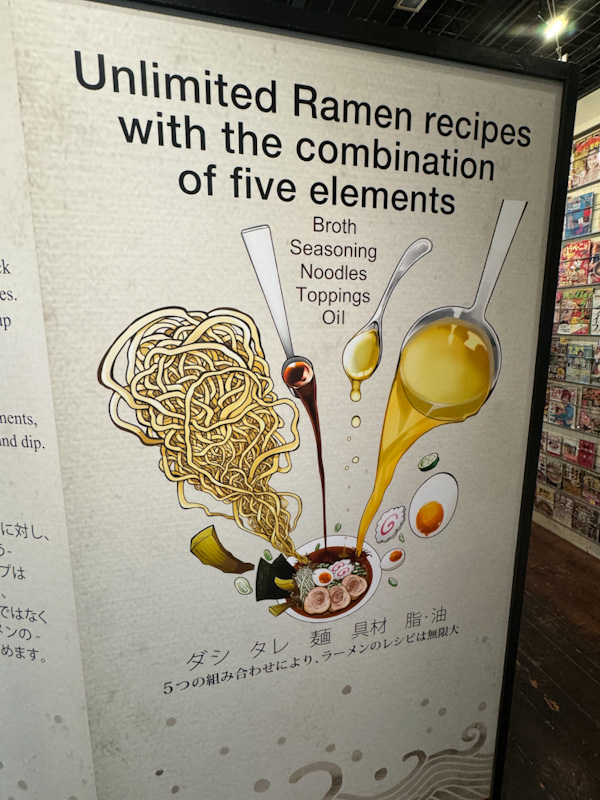
5. What Are the 5 Key Elements in a Bowl of Ramen?
Every bowl of ramen is like a perfectly balanced symphony—with each part playing a specific role. If you’ve ever wondered what makes a bowl great (or not), it usually comes down to how well these five key components of ramen come together:
- The Broth (Soup Base): This is the heart of the bowl. Ramen broth can be light and clear or rich and creamy, depending on how it’s made. Common base stocks include chicken, pork (tonkotsu), seafood, or even vegetables. The broth is typically simmered for hours—sometimes over 12—to extract deep, layered flavors and rich umami.
- The Tare (Seasoning): Think of this as the soul of the soup. Tare is a concentrated seasoning sauce that gives the broth its identity—shoyu (soy sauce), shio (salt), or miso (fermented soybean paste). While the broth provides depth, the tare defines the profile. It’s usually added to the bowl first, with broth poured over it.
- The Noodles: Not just any noodles! Ramen noodles are made with wheat flour and kansui, a special alkaline water that gives them their unique springy texture and yellow hue. Noodle type matters too—some are curly, others straight; some thick, some thin. Chefs match noodle shape and texture to the broth type for the best slurp.
- The Toppings: These aren’t just pretty decorations—they add contrast, richness, and texture. Common ramen toppings include chashu (braised pork belly), ajitama (seasoned soft-boiled eggs), negi (green onions), bamboo shoots, seaweed, and sometimes corn, butter, or even wontons depending on the regional style. They’re chosen to complement and enhance the flavor of the broth and noodles.
- The Aroma Oil (Flavored Fat): Here’s the secret weapon. A drizzle of aromatic oil—like garlic oil, scallion oil, chicken fat, or even burnt onion oil—is added just before serving. It floats on top and hits your nose with a blast of fragrance as you take your first bite. It’s often subtle but makes a big difference in depth and finish.
Together, these five parts create the magic of ramen. Once you learn to notice each element, you’ll start to appreciate how much thought goes into every bowl—and why no two are ever quite the same.
Final Thoughts: A Deeper Appreciation for Ramen
Visiting the Shin-Yokohama Ramen Museum gave me a whole new level of respect for ramen. It’s not just comfort food—it’s an evolving craft built on centuries of culture, technique, and regional pride. From the complex balance of tare and broth to the springy texture of alkaline noodles and that final drizzle of aroma oil, ramen is truly an art form in a bowl.
Whether you’re slurping up a classic tonkotsu in Fukuoka, a light shio ramen in Hakodate, or trying modern plant-based versions popping up across Tokyo and Singapore, knowing what goes into each bowl helps you taste it differently. Hopefully, this post gives you a stronger foundation in ramen knowledge and helps you spot what makes a bowl stand out.
I’ll continue sharing more ramen reviews and discoveries here—so if you’re just as obsessed as I am, stick around! From hidden gems in Japan to ramen haunts in Singapore, this blog’s all about helping you find (and understand) the best bowls out there.

